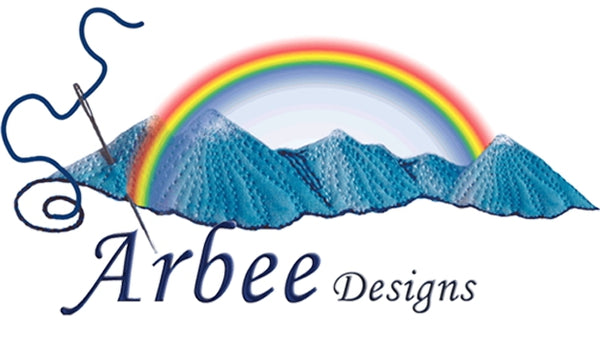Most of my applique blocks are quilt-as-you-go because I prefer to do the applique stitching through all layers and it is just so much easier to quilt small blocks than it is a large quilt. My flower blocks which have added stitching are all done this way. After launching my new flower block quilt "Flower Garden" I had a customer ask "how do you add a layered block into a pieced quilt design?" .....I decided to share the answer here on my blog.
The best blocks to use are those that are not stitched or quilted right to the edge. For example, this block would be more difficult...
than this one...
The idea is not to stitch the batting or backing into the seam if you can help it. You cut your borders or pieces in the same way as you usually do. You cut your quilted blocks the same way remembering to include the 1/4" seam allowance. It is the sewing of the seams that is different.
You need to lift up the batting and backing so you don't include them in the seam.

Separating the layers

Stitching the seam with batting/backing moved out of the way
You can see if stitching goes right to the edge, how difficult that might be - there are several workarounds to bypass that problem.
- As long as you used thin batting you may opt to leave the batting/backing in the seam. You may be able to trim it back later if you want, just to reduce the bulk within the seam allowance.
- If there is only a small amount of excess stitching (like you see in my Manuka Block above), you might decide to pull out those excess stitches, just enough to stitch the seam.
- You could stitch the seam as close to where the stitching blocks it, then jump over to where you can safely start the seam again. Once the seam is finished, turn it over and hand-stitch down the gaps invisibly. Of course, if there are too many gaps you might simply stitch the entire seam by hand using an invisible applique stitch.
Once you have stitched all the seams around your block, continue adding any other pieces in the usual way.
Dealing with the Back
As you can see, the block section is layered with batting and backing. Now you need to add batting to the other areas.
There are two important parts to getting this right
- Well press your block and seams as you would for any quilt you are about to layer with batting and backing. You don't want the front bunched up or uneven.

Well pressed seams - Cut the batting sections with your rotary cutter and ruler. The pieces of batting need to match perfectly with no overlapping and no gaps - the rotary cutter and ruler will help you get this right. The outer edge doesn't matter because that will be trimmed later any case.

Batting pieces in place
When you have all the pieces cut and in position on the back, you should join them. You can do this by either stitching them (herringbone stitch is best - it is flat and secure) or by using fusible batting tape which you can see here.

Batting Tape

close up of Batting Tape
It is best to position the tape with the join in the middle. This is easy if you are going to add a full backing fabric which most quilters will prefer as it will cover all the stitching - it's quicker and easier too. In my case, I'm not using a full backing piece so instead, I will slide the tape as far under the backing fabric on the block as I can and press it in place there. There is still plenty of area for the adhesive to stick. I'll use an alternative backing option but we'll leave those instructions for another day.

Second Arctotis block
In today's lesson, I used my Arctotis block. I have two of these blocks in different colors as you can see above. How cool would it be to make a quilt with just this flower in various colors?





